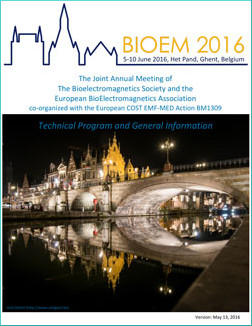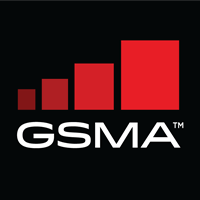Program
- Program Book
- Social events
- Plenary sessions
- Tutorials
- Workshops
- Mobile Manufacturers Forum (MMF) Workshop (Sunday, June 5)
- IEEE ICES TC95 Meetings (June 2 - 5)
Program Book
Social Events
Welcome Function
Sunday, June 5th, 6:30 p.m. at the conference venue (Room: Refter). Expected end time: approximately 8:30 p.m.Student Ice Breaker
Sunday, June 5th, 8:30 p.m. till 0:30 a.m. at the Wasbar (Nederkouter 109), a short walk from the conference venue. We will meet at the conference venue Registration Desk at 8:15 p.m. and then walk in group to the Wasbar.Evening Banquet
Join us Tuesday, June 7th, 6:15 p.m. at the quay at the Graslei (Gent-Watertoerist) for a guided historic round-trip on the beautiful waterways of Ghent.
As it is only a short distance from the conference venue, we will gather at the Registration Desk at 6:00 p.m. and walk in group to the quay. The boats are on a tight schedule, so please make sure to be at the quay no later than 6:15 p.m.
The boats will take us to the Oude Vismijn (Sint-Veerleplein, access through the gate next to the bridge) where we will disembark at 7:15 p.m. for a reception and the conference banquet, followed by an after party with DJ.
Plenary Sessions
Plenary 1: Wireless-Power-Transfer (WPT): A "safe" evolution for Wireless Power Transfer: the EM compliance of systems and device
Wireless power transmission has received growing academic and commercial attention in the last ten years. The strong reactive near-field produced by WPT systems induces electric fields in the body tissue of persons in their close vicinity. This may pose concerns about potential direct health hazards when such systems are used in proximity to people or indirect risks via interference with implants. The plenary is aimed to identify research gaps, as well as challenges and opportunities, for WPT commercial deployment, providing information on the way of designing compliant systems and devices based on proper evaluation of exposure assessment, dosimetry and compliance testing. It is intended to stimulate interest for people involved in public health or standard settings, and in general for researcher interested in new exposure conditions to be tested experimentally.
- Exposure assessment and dosimetry of WPT systems
Speaker: Akimasa Hirata (JP) - WPT Compliance testing methodologies
Speaker: Mark Douglas (CH)
Plenary 2: Characterization and manipulation of cells with E fields
This plenary is the most high level, new and challenging item regarding the way to interact microscopically with characterization and/or manipulation of living cells with the use of electromagnetic fields. This becomes a powerful technique to provide identity, quantity and viability of cells at the point-of-need for diagnostic, surveillance and monitoring purposes, making possible low-cost demanding lab-on-chip facilities.
Speaker: Peter Gascoyne (US)
Plenary 3: Can we induce adaptive response with EM stimulation? The new frontier of immune system and EM field interaction
This is currently one of the newest and most intriguing subjects regarding bioelectromagnetics: how to induce the immune system to respond to EM fields with a process of self-repairing. There is evidence that some E-field treatments generate associated molecular patterns that trigger an adaptive immune response against inflammatory processes therefore soliciting a systemic immune response. The plenary will point out new routes to be explored on the basis of known and accredited molecular pathways and will permit to identify the perspectives for biomedical applications. It is aimed to elicit broad interest in the whole community, combining the classical knowledge of EM field effects with the future research in a translational perspective. Chair: M. Simko
- Immune system and EMF, state of the art and new routes to explore
Speaker: Claudio Pioli (IT) - The challenge of immunoelectrochemotherapy
Speaker: Lluis M. Mir (FR)
Plenary 4: Need of a breakthrough in clinical application of hyperthermia: shared knowledge, gaps and challenges
Several studies have shown that adding hyperthermia to radiotherapy or chemotherapy increases the probability of survival for a variety of tumor pathologies without enhancing side effects. Wide spread use of hyperthermia is however hampered by complex technology, long duration of the treatment and limited metrology to observe and control targeted tumor heating. The plenary will review the latest advances in 1) RF and US technology using advanced hyperthermia treatment planning and non-invasive monitoring and 2) the latest results in heat induced obstruction of DNA damage repair and heat enhanced immune response against the tumor. Based on this review it will be discussed what additional scientific gaps and economical and health care political challenges must be addressed to achieve the breakthrough in clinical application of hyperthermia.
Speaker: Stephan Bodis (CH)
Plenary 5: New avenues of epidemiological research -– added value or old challenges, or both?
In recent years, several new epidemiological projects were started and some were established to provide rather research platforms than individual studies to address possible health effects of RF EMF. The new studies were designed to overcome limitations of previous epidemiological studies but also broadening for new hypotheses. The setup of the plenary is providing new information on and beyond epidemiology, namely also for those interested in or dealing with exposure as well as those dealing with public health or standard setting. Novel aspects include first results from large-scale prospective studies of mobile phone users, improvements of exposure assessment for epidemiological studies, and possibly RF EMF related outcomes in children.
- Mobile phone use and health related behaviours and symptoms: first results and future perspectives from the COSMOS study, a European Prospective cohort on Mobile Phone use and Health
Speaker: Mireille B. Toledano (UK) - GERoNiMO – integrated exposure assessment and preliminary results from epidemiological studies
Speaker: Elisabeth Cardis (ES). - Mobile phone use, radiofrequency electromagnetic fields exposure, and children’s cognitive, behavioural, and non-specific symptoms - the example of the Swiss HERMES study within the GERoNiMO project.
Speaker: Martin Röösli (CH)
Tutorials
Tutorial 1: Standards Development Activities of the IEEE International Committee on Electromagnetic Safety
The IEEE International Committee on Electromagnetic Safety (ICES) develops standards for the safe use of electromagnetic energy in the range of 0 Hz to 300 GHz. ICES consists of two technical committees. Technical Committee (TC) 95 develops standards for human exposure to electric, magnetic and electromagnetic fields based on established adverse effects with appropriate safety margins included. TC34 deals with methods for the assessment of human exposure to such fields, and develops compliance assessment standards for products that emit electromagnetic energy. In this presentation, standardization activities of ICES are updated. ICES welcomes participation of new members with an interest in developing science-based standards.
Speaker: C.K. Chou (US)
Tutorial 2: Personal RF-EMF measurement
How to conduct personal radiofrequency electromagnetic field measurement surveys
Many epidemiological studies into RF-EMF and health effects have so far relied on self-reported cumulative call time, number of calls or years of mobile phone ownership. Such questionnaire-based exposure assessment clearly provides easy, yet crude estimates of exposure to RF-EMF. With the development of portable measurement devices for radiofrequency electromagnetic fields, a number of possibilities have emerged to characterize exposure in an objective and quantitative way, in real-time. The subject that is studied can be a person (personal measurements), a specific place (spot measurements) or an environment that is considered to be of public interest (microenvironmental survey). Yet, these study designs bring along their own advantages and challenges when conducting, analyzing and interpreting the measurements. The real-time nature of the data allows us to gather a richness of measurement data within a relatively short time. Several challenges relate to technical and practical limitations of conducting any measurement study, whether it is environmental or personal. During this tutorial, we consider several of those issues: cross-talk, imperfect isotropy, body shielding, sources close to the body, selection bias and more, and guided by examples from the research practice, we will provide tools to help make careful considerations during the study design process.
Speakers: Marloes Eeftens (NL) and Peter Gajšek (SI)
Tutorial 3: "The Erice-EBEA School framework" Neuroprotective effects of EM fields: from preclinical to clinical studies
Neuroprotective effects of EM fields: from preclinical to clinical studies
Speaker: Ruggero Cadossi (IT)
Workshops
Workshop on implementation of the EMF Directive
Chairs: Philip Chadwick & Georg Neubauer
Speakers: Philip Chadwick (UK), Georg Neubauer (AT), Carolina Calderon (UK) and Wout Joseph (BE)
Me, Georg, Woot Joseph, Carolina Calderon
Single cell electromagnetic exposure and analysis: experimental considerations, coupling of optical imaging techniques, and biological outcomes
Chairs: Caterina Merla & Rafael Davalos
Speakers: Caterina Merla (IT), David Moreau (FR), Antoine Azan (FR), Agnese Denzi (IT), Aude Silve (DE) and Rafael Davalos (US)
Spatial averaging: towards a better basis for standard procedures
Chairs: Martin Gledhill & Steve Iskra
Speakers: Martin Gledhill (NZ)







